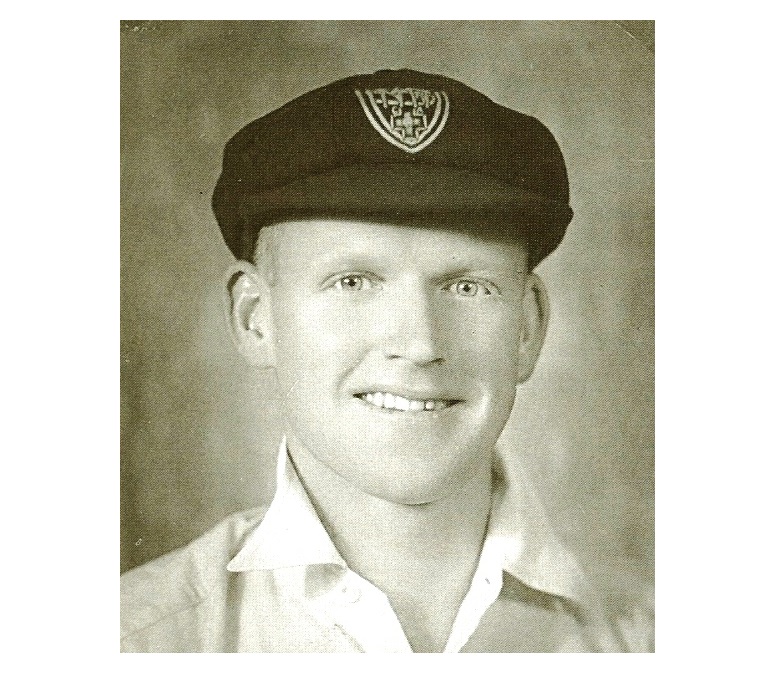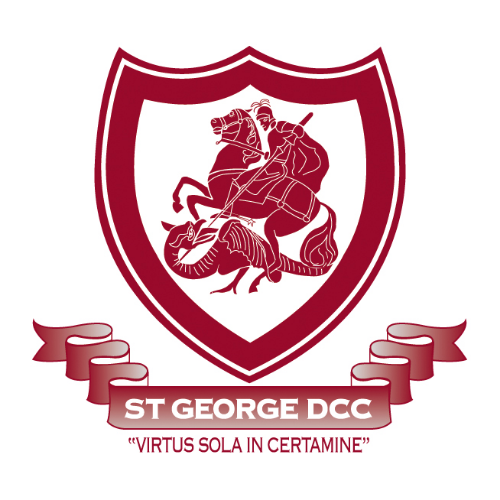Harold Stapleton
St George Cricket Club | March 18, 2025

By Ronald Cardwell (originally in 2015 - Updated 2025)
At the time of writing back in 2015, Harold Vincent Stapleton was the oldest living first class player in Australia. John Manners, who lived in England and played for Hampshire and the Combined Services was the only other first class cricketer ahead of him. Stapleton would have been 110 years this year. In putting cricketers into perspective concerning their ages Jim Hutchinson, 103 years and 344 days was the oldest ever living first class player. Keeping it in the St George family at the time of writing, Arthur Morris was 93 years and 101 days [as at 30 April 2015] to be the third oldest living Test cricketer. But it’s back to our main character.
Many commentators have gone on record saying that Harold Stapleton was the ‘greatest sports all-rounder from the Far North Coast of NSW’. Between 1927 and 1938 he was the best in cricket, tennis and Rugby League. When he eventually came to Wollongong for work he played first grade cricket in Sydney for St George alongside some of the outstanding players produced by the club.
Stapleton was born on 7 January, 1915 in the country town of Kyogle. John Gleeson, the former Australian spin bowler was also born in the northern NSW town. Kyogle is 32 kilometres north of Casino and sits on the banks of the Richmond River.
At the age of 12 Stapleton first came into prominence. He was playing A grade cricket for the Ettrick club in Kyogle. His all-round ability included education and he was awarded a bursary to Lismore High School. The young student lived in Lismore and travelled the 43 kilometres back to Kyogle each weekend to play cricket in the summer and football in the winter. As a fullback with the Kyogle side he was by all accounts dynamic.
At the age of 14 Stapleton was selected in the Kyogle first X1 inter district side and scored 16 and 68 not out against Beaudesert. In subsequent fixtures during the season against Casino and Lismore he scored 64 and 65 not out respectively. Stapleton finished school with a brilliant sporting and academic record behind him.
Charlie Simpson, a local sportsman and business man, organised for the 18 year old to be given a position in Lismore with the Atlantic Union Oil Company. After a few trial games in the summer and then in the winter the strapping young country boy was now a man playing cricket and Rugby League for Lismore.
In the 1933-34 season the country cricket selectors called on Stapleton to play in country week. He continued to play and score runs in district and minor representative cricket and was selected in the Northern NSW side that played against the 1936-37 MCC side. In a drawn match the 21 year olds opportunities were limited yet he did have the opportunity of learning from some of the English players including Fagg, Hardstaff, Robins, Voce, Ames, Allen and Hammond.
With cricket playing an important part in his life something had to go. It was Rugby League. An injury during the 1936 season, where he had put in many dominant displays, saw him retire. At the time of his retirement he was rated the best footballer in the Group 1 competition.
The early promises shown saw Stapleton selected for the NSW Colts X1 against Queensland Colts in the annual fixture at the Gabba in October 1937. When the teams were announced Stapleton was 12th man but an injury to Cec Pepper and Norm McGilvray saw Stapleton take the field. In a strong NSW side that included Saggers, Gulliver, McCool, and Crossan, Stapleton was amongst the runs scoring 50 (six fours in 77 minutes) and helping NSW to win convincingly. The 1937-38 had been a big one for Stapleton, 930 runs at an average of 146 including five centuries, which included the highest score made in Lismore Cricket of 312 not out.
Having given up Rugby League Stapleton took to tennis and regularly took out the singles, doubles and mixed doubles titles.
In August 1938 Stapleton was transferred to Wollongong with his employer Atlantic Union Oil Company and was invited to play with the St George D C C. It was somewhat of an ordeal as Stapleton worked in Wollongong on a Saturday morning finishing work at noon. It was then a quick sprint to catch the Wollongong train for the journey to Sydney for cricket. Often it was Hurstville Oval. At other times it was the grade grounds dotted around the Sydney metropolitan area. There was no time for a warm up or a pre match hit in the nets. It was often straight onto the field after a quick change in the pavilion.
Stapleton made his grade debut with Arthur Morris in the first game of the 1938 -39 season against Petersham. ‘I was keen and enthusiastic’ recalled Stapleton in 2003. Following matches against Randwick and Balmain there was the fixture against the University of Sydney. Stapleton scored his debut first grade century, 146, scored in 150 minutes hitting 21 fours and four sixes, the century coming in 96 minutes. He batted with Arthur Morris and between them they added 202 runs. Morris, not yet 17 scored 115 off the University bowlers. ‘Arthur and I had no cricket equipment. We used the club’s kit bats which were knocked around a bit’ recalled Stapleton.
After each match at Hurstville Oval there was dinner with Arthur and his father. ‘After the game finished at 6.00pm and we had changed, Arthur and I went back to his home where the house keeper, Mrs Awty, cooked a hot roast dinner. After the meal I walked back to Hurstville station to catch a train back to Wollongong. Life was certainly different then’ recalled Stapleton.
Under the astute leadership of Bill O’Reilly Stapleton had a fine year. He was second in the batting averages, 403 runs at 40.30. The club noted that Stapleton playing for the club was indeed a “valued and splendid acquisition”.
Stapleton had been selected in Second X1 sides that played Western Australia in November 1938 and Victoria in January 1939. The Victorian fixture is significant in that he played in the match with Arthur Morris, who was playing his first game in a NSW cap.
In the 1939 -40 season Stapleton scored the only St George century of the summer, 117 in 101 minutes, against Balmain. He was regarded “by many good judges as one of the most useful players in the competition”. Lou Benaud had described him as a ‘sensational cricketer’.
The following season was also a sound one for Stapleton, 454 runs at 41.20. He also secured 21 wickets at 14.28 opening the bowling with his fast left arm medium to fast balls. The St George Cricket Club annual report noted that Stapleton was “a fielder of the very first rank” taking 22 catches during the season.
Adelaide Oval was the ground where Stapleton made his debut for NSW on 21 February 1941. The NSW selectors had selected a strong side to take on South Australia. NSW were certainly the better side. They comprehensively beat the home side by an innings and 45 runs. Alongside Stapleton was Bill O’Reilly, who was the NSW captain and close friend Arthur Morris. O’Reilly ended up with seven wickets in the match with Colin McCool, 100 and six wickets in the match, and Jack Chegwyn 103 assisting the NSW cause. Stapleton opened the bowling in both innings without success and only troubled the scorer with one run in his only innings. All of the wickets in the match fell to the spinners. It was reported in the match that Stapleton ‘was quick and bowled without luck’. Unfortunately for Stapleton it was the end of the season and was the only time that he donned the NSW blue cap.
The 1941–42 and 1942-43 seasons were limiting ones for Stapleton. With war clouds reaching Australia Stapleton had joined the Australian Army in April 1941. He served in Queensland and Port Moresby until he was discharged in January 1946.
Whilst in the Army he played cricket representing the Army X1 against Queensland and NSW. In the Queensland fixture he scored 104 with Bill Brown saying ‘Stapleton was one of the best left-handers with shots in front of the wicket that I have seen. He could easily make the state eleven when Sheffield Shield matches are resumed’.
The 1943-44 and 1944-45 seasons saw Stapleton play only a handful of games. His career at St George was coming to a close. With army duties taking up a significant part of his year there was only time for one game in the 1943-44. It was the final match of the year where St George took on the Marrickville side. St George lost the match and the premiership won by Marrickville DCC for the only time in their history.
St George had been kind to Stapleton so far as premierships were concerned. Under the captaincy of Bill O’Reilly the club had won four first grade premierships, 1939-40, 1940-41, 1941-42 and 1942-43.
With work taking a greater part of his life Stapleton played during the 1945-46 season with the Keira Cricket Club in Wollongong. It was a strong club winning premierships in 1946-47, and for three years from 1948-49. Stapleton retired from cricket at the conclusion of the 1950-51 season but was talked into another four seasons. At the age of 40 Stapleton scored a career ending 85 not out in the final in 1955 to give Keira another premiership.
In December 1947 Stapleton had appeared in his final major representative match. It was the Southern NSW v Indian match at Manuka Oval in Canberra. A few weeks shy of his 32nd birthday Stapleton scored a few runs and the paper of the day reported that the opening bowler ‘Stapleton gave a good performance. He bowled unchanged for 18 overs and only 17 runs were scored off him‘. He ended up with 2 for 39.
When the Illawarra team for the period 1945-1995 was selected Stapleton was selected as the teams allrounder. To complete the picture in Wollongong Stapleton took out the batting averages in the Illawarra for the 1947-48, and 1949-50 seasons. In the 1948-49 and 1949-50 seasons he was the leading wicket taker. With 68 wickets at 5.90 in the 1948-49 season his tally in 68 seasons (in 2015) since 1943-44 has only been beaten once.
As the years moved on Stapleton continued playing tennis, winning many titles and playing regularly in country week tennis. Between 1951 and 1953 Stapleton was a member of the Wollongong team that fought off the challenges of Albury and Newcastle to win a hat trick of titles. Stapleton possessed a an awkward left hand and penetrating flat or kicking serve, one that was the envy of many in Country NSW. Gordon Grant and Stapleton were regarded as the best doubles team ever in Wollongong and one of the most formidable in the NSW Country competition.
Golf also became part of the equation for Stapleton who played off scratch at one time at the Wollongong Golf Club, where he was a regular player each week until he was 93.
When the St George Cricket Club centenary came around in 2010 the young man who learnt his cricket in Kyogle was amongst the invited guests. He sat with his old friend Arthur Morris, NSW player 443 (Stapleton was 444) and was heard to say ‘I am glad that I played for St George. It gave me much but I was only able to repay them in a small way’.
As a club we are mindful of our former players. They have carried on the tradition of ensuring that the clubs motto ‘honour alone is in the contest’ continues.
For the record Harold Stapleton’s statistics at St George are as follows:-








